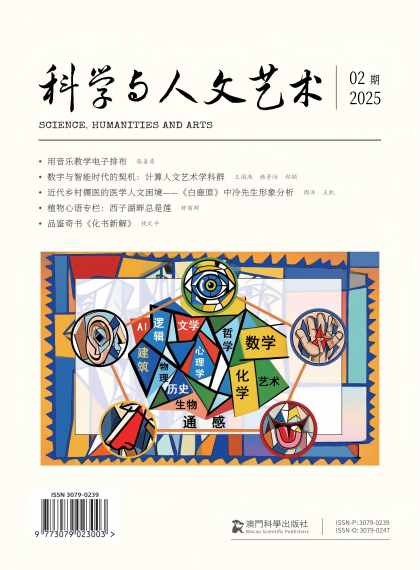
The Aesthetics and Science of Lotus
——平时都叫荷花,一说莲,就古色古香起来了
谁说风过无痕?那是他没来过西湖,不信就来坐看接天莲叶轻摇。
谁说风本无香?那是他没到过曲院风荷,不然呼吸之间便沁透心脾。
西湖是杭州人的大荷塘,处处是荷花,曲院最出名。学校离曲院风荷不远,午间或是空余时间,同事们常常会结伴去走一圈,享受5A景区的美好。有时候也会晚饭后去散个步,视觉受阻的时候,嗅觉会特别警觉起来——远远地,就能闻到阵阵清香,比白天显著许多。


图1. 荷叶与荷花(陆海摄)

图2. 莲的植物笔记(钟留群绘制)
公园里天天都有导游挥着小旗帜带着游客逛,他们最喜欢就着“曲”字笑问游客。其实这里原本是南宋的宫廷酒坊,“曲”指的是酒曲。可是,康熙皇帝南巡时大笔一挥写了个别字——“麯院”就被他超前有预见地简化成了现代的“曲院”。
酒坊早就没了,酒坊边的荷花却是年复一年,它们生长在水榭亭台边,生长在小桥流水的景致中,韵味就格外古意一些。
仲春时节可以看到花工师傅穿着水田裤,踩在寒凉的水里摸索着清塘种荷花,那时候是水面最开阔的季节;夏天就整个是荷花的世界了,荷叶层层叠叠、挤挤挨挨;深秋之后,也是满塘不寂寞;而冬季来曲院看残荷,是杭州的又一道风景。
残荷,听起来有点悲凉,但曲院的不是。湖边远望,枯黄的荷叶在阳光下会变得亮黄,给肃杀的季节平添温柔。近看荷杆苍劲,间杂着七零八落的残叶,与平静的水中倒影相映成趣,简洁刚劲的线条,升降起落、曲直钩回,看起来是抑扬顿挫的画儿,听起来是铁画银钩的古曲。在静水的映衬下,生命尽头的残荷呈现的是极简的精致、泰然的气场,便就与伤感无关了。

图3. 残荷(钟留群摄)
荷花品种很多,根据人们的需要,培育了藕莲、籽莲和花莲,各有所长。比如花莲和籽莲的藕就粗硬,不太好吃;而同样是花莲,个子高矮可以差很多,西湖里种的,都是大长腿,不然会被水淹没。
荷叶是个大圆盘,叶脉很特别,从叶中央辐射状发出后会有1-2次叉状分枝。长长的叶柄中空,把荷叶高高举出水面,所以叫挺水植物。叶柄表面密生小刺,不小心蹭到了,轻易就划出血道道。
小时候最喜欢撩水泼到叶面上,看一粒粒水珠晶莹地滚来滚去,慢慢安静下来汇入叶心,水若太多,叶面会载不动而微微倾斜,水珠儿便滑入水里,还带走了叶面的尘埃。出污泥而不染大约说的就是这自洁功能,不然,别的花儿定要不服了——谁家花儿不是从泥巴里长出来的呀?又哪朵花儿蓬头垢面了?
细看荷叶表面并不是很光滑,白粉轻覆,有点毛茸茸的;轻轻触摸荷叶更会发现荷叶表面略糙,尤其是叶缘,摸得到突起的细密小颗粒,有点像砂纸,指尖还会留下蜡质的感觉。
荷叶不沾水是因为叶表有一层细密的小绒毛,这可是些微米级和纳米级的超微小结构,比我们的头发丝细得多,肉眼无法看清,水滴和灰尘对它们来说都是庞然大物;小绒毛连同它们之间困住的空气形成了一层气垫,再加上蜡质微粒,水滴会被妥妥地托举着隔绝于叶表,表面张力的关系,只能形成水珠滚来滚去,不断卷起灰尘微粒。善于学习的人类受到启发,纷纷模仿聪明的荷叶制造出了各种防水的仿生材料——泼不湿的布料、自清洁的窗户玻璃、不沾水的手机屏幕……
我取了残叶一角用手指重重捻一下,它便失去了凝水成珠的本领,沾水就湿,应该是那些纳米毛被捻得倒伏了。
荷花初长的叶会浮于水面叫浮叶;后长的叶大多挺出水面叫立叶。叶子出水前都是整齐地从两边向内卷拢的,卷成个两头尖的小棍——所以说“小荷才露尖尖角”。尖尖角很厉害,能轻松突破茂密的老荷叶找到生存空间。
荷花的花儿单朵长在花梗顶端,也是高高挺出水面。荷花开时,中间有个小莲蓬,这个叫花托,掰开过莲蓬的就知道它质地松软如海绵。小莲蓬四周是密密的雄蕊,那雌蕊在哪里呢?看小莲蓬上有散生的蜂窝状孔洞,每一个小孔里就埋藏着一个浅黄色的雌蕊,以后会结出莲子来。
花谢后花托会膨大,这时才是真正的莲蓬。我们吃的新鲜莲子其实都是些没成熟的小坚果,绿色的果皮等成熟后会变为黑色,极硬,埋在地层中可千年不烂,大连的普兰店就不断地挖掘到古莲子,还总是能发芽生长直到开出花来。
我们一般等不到那个时候,果皮碧绿着的时候就剥来吃了,白生生的,清脆微甜,干净的滋味;但若咬到碧绿的莲子心,会苦到皱眉。其实莲子心是胚,是未来的莲的幼体,我们爱吃的部分是肥厚的子叶,满满的都是莲为幼体储备的养料。剥开莲子时,表面还有一层薄薄的白色种皮,商品莲子是去掉种皮后晒干的。
干燥后的莲蓬壳看起来没什么用了,但对染家来说,是天然植物染料,可以染出藕色、烟灰色或棕色。
荷花的茎就是我们熟悉的藕,深埋在淤泥中横着生长,所以是地下茎,但肥大得不像茎。其实一段藕,就像一节竹子,只是相当于竹筒的部分很胖、相当于竹节的部位却又好像被绳子抽紧了似地细,植物学上称为缢缩。
藕里边有好多条贯穿的孔道,所以藕的横断面看起来特别玲珑,有许多大小不一的孔。这是适应水中生活形成的气腔,这种气腔在叶柄、花梗里都有,细小而已。在细窄的节的周围还环生着很多根须,节上抽出的叶和花,能一直长到水面之上。
藕断丝连是我们熟悉的现象,细密缠绵的藕丝其实是运输物质用的导管的增厚细胞壁,正常状态下是螺旋形盘曲着的,当藕被折断时,那些导管因为比较韧不容易断,于是就像弹簧一样被拉长了。导管壁会不断加厚,所以,等藕老了,丝会更多。
初秋的今日,曲院荷香未尽,桂香已悄悄袭来。时间无可改变,有一些美好终于会过去,新的美好又一定会出现。所有的不舍,都是我们和这个世界的藕断丝连。这个世界,有我们的朋友,有我们的过去——越老,记忆的丝越多。
作 者 / Authors:
钟留群,高中生物教师,几十年如一日引领着学生在大千世界里探索科学、感悟生命。心里的世界是通感的,总是在边界模糊不清的世界里游走,比如想让科学更文艺,想让文艺更科学。获过各级教学奖,著有散文集,并在博物绘画领域获专业奖项。偕学生共同创立学生社团生命社并开设相关选修课,先后建立校园植物网站,完善学校标本馆并建设学校种子馆等,致力于让学习的方式多种多样。